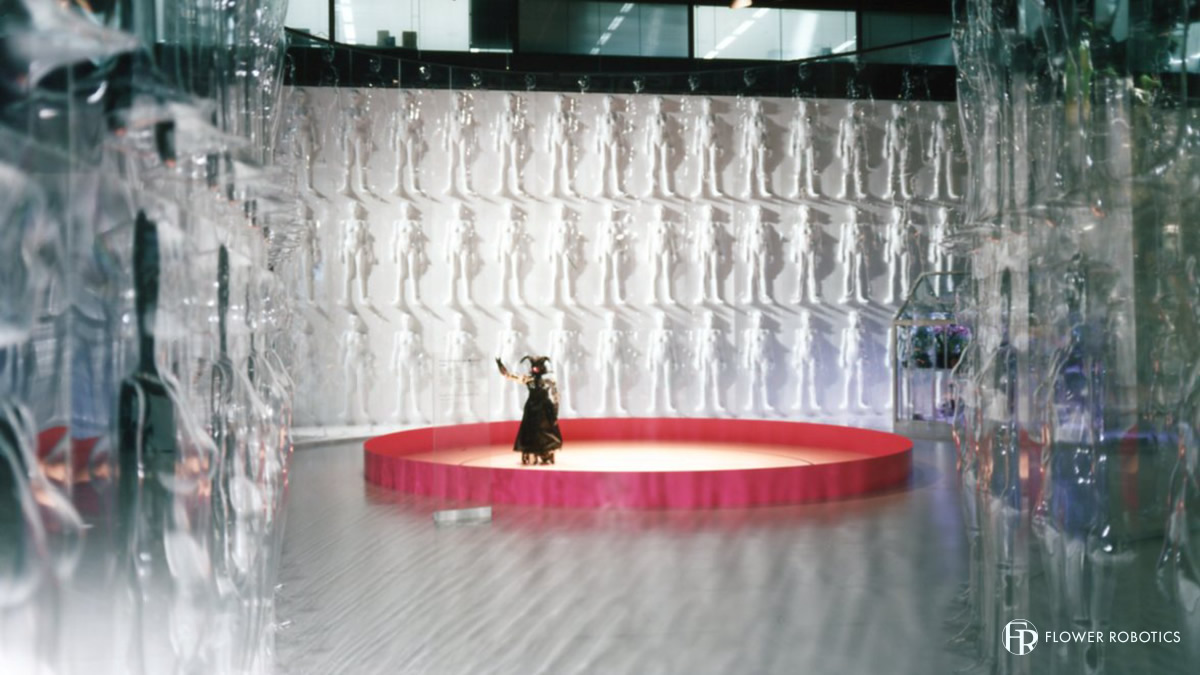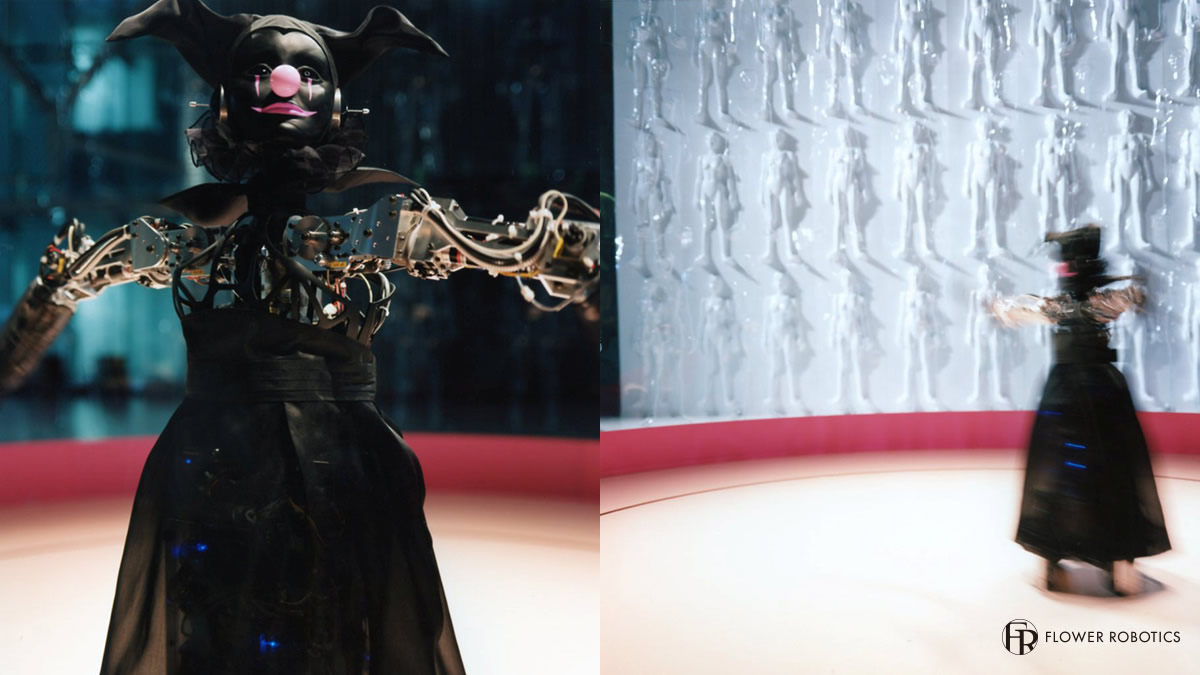This exhibition has ended.
Exhibition Outline
What are robots to us, as human beings? Why are we excited when we see robots? Yet, at the same time, why do we feel confused or puzzled? This exhibition is a thought experiment of the cultural meanings and values behind the familiarity, fear and discomfort humans feel about robots. It proposes a "robot design" interface between humans and machines that sees robots themselves as new media that bear memes*.
We invite you to think about the human-robot relationship as you meet a number of robots in a space that stimulates the imagination in a variety of ways.
*Meme
An element of a culture or other idea, symbol, or practice passed from one individual to another by cultural analogues to genes. The word was coined by biologist Richard Dawkins in his 1976 book, The Selfish Gene, combining "gene" with the Ancient Greek mimeme (imitated thing).
Contents
Robot factory of the future
The venue is surrounded by transparent panels onto which the figure of a human has been embossed. This space is a place for envisioning a robot factory of the future and for making one think about such associations as robot memes, the relationship between humans and robots, and human and robot replication.
(Production: Tokujin Yoshioka)
Cyclops — The Glowering Giant
This giant robot has a flexible spine and an eye (CCD camera). The cyclops' spine consists of a stack of spherical joints, surrounded by 30 "air muscles " (hydraulically activated artificial muscles). As visitors come into the venue, the robot sways back and forth as it follows them with its eye. Experience the gaze and gentle movement of the cyclops as you think about what it means to be an intelligent being.
(Production: Shunji Yamanaka/ Technical Cooperation: Jouhou System Kougaku Laboratory, Graduate School of Information Science and Technology, the University of Tokyo)
P-noir (Pierrot noir, or "black clown")
This exhibit sees P-noir the robot, modeled after a music box, dance like a ballerina on stage.
By manipulating an interface, visitors make P-noir's movements change. His face, arms, and legs can be moved to give P-noir many different expressions.
(Production: Tatsuya Matsui)
Orchisoid
"Orchisoid" means like a wild orchid. Here visitors will see a robot merged with orchids moving around in a pseudo-tropical environment. The orchids' bioelectric current will be measured as it fluctuates according to environmental changes over the course of the exhibit period. In an experimental way, this exhibit shows the interactions among the orchids that compose the robot and its genetic algorithms and movement mechanisms, as well as among the environment and the people (visitors) having an effect on the space.
(Production: Yuji Dogane & Masaki Fujihata)
Image presentation: Two-legged Walking Catalog
An interactive system shows images of two-legged walking performed by humans (a baby beginning to walk, an elderly woman, a ballerina, and a kyogen performer), a monkey, a duck, chicken, and a robot (PINO). By simultaneously observing several different methods of two-legged ambulation, visitors will discover the differences and characteristics of each and the mechanisms behind two-legged walking.
(Production: Masaki Fujihata)
Humanoid Controller
Computer-based control plays a critical role in enabling humanoids to walk. Science is still far from achieving a humanoid controller that can make humanoids walk as steadily as humans. Use a state-of-the-art simulator that calculates humanoid movement in near real time and test the current level of humanoid controller technology performance.
(Production: Nakamura/Okada Laboratory, Graduate School of Information Science and Technology, the University of Tokyo; Japan Science and Technology Agency Basic Research Program)
Venue Scenery
Overview
- title
- Special Exhibition "Robot meme - do robots carry the DNA of our culture?"
- Term
- Saturday, December 1, 2001 to Monday (Holiday), February 11, 2002
- Venue
- 1F, Miraikan - The National Museum of Emerging Science and Innovation
- Organizer
- Miraikan - The National Museum of Emerging Science and Innovation
- Exhibition producers
- Fujihata Masaki+Dogane Yuji, Matsui Tatsuya, Yamanaka Shunji, Yoshioka Tokujin (spatial design), and Nakamura and Okada Lab, Department of Mechano-Informatics, University of Tokyo


